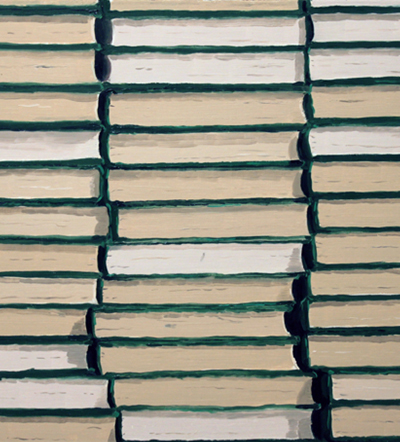
JOSEPHINE HALVORSON Many Books, 2009 (Click to enlarge)

A wise friend of mine once rhetorically asked me, “Who doesn’t love books?” From now until February 26,
Ex Libris — a bookworm’s dream of an exhibition at Adam Baumgold Gallery — is the resounding answer. Literally meaning, “from the books,” the show features book-inspired work by 28 different artists including titans such as Ed Ruscha, Chris Ware, David Hockney, and Tom Burckhardt. So long as the art stays true to the rather loose theme, anything goes. Thus viewers can expect everything from artists’ books and prints to drawings and sculpture, with nods to Kant, Burroughs, Proust, pulp fiction and comics laced throughout. The sheer variety of different pieces suffuses the show with a playful yet deferential tone as artists pay homage without ever taking themselves too seriously. Jennie Ottinger’s delicate book cover paintings of Truman Capote’s
In Cold Blood and Salman Rushdie’s
The Satanic Verses are just one example. At the risk of sounding overly dramatic, no true lover of books should miss this show.
Adam Baumgold Gallery
(more…)
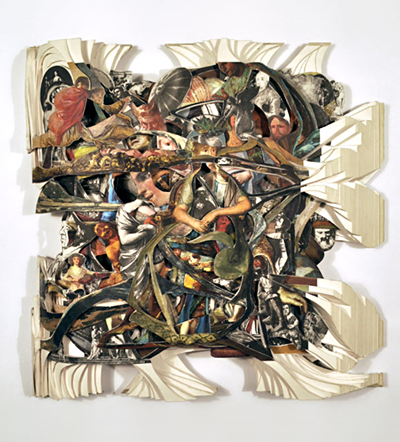
Goya, 2010, Altered Book Image, Courtesy of the Artist and MiTO Gallery (Click to see detail)

For an artist who has worked within the confines of one material for the better part of his career, Brain Dettmer’s artwork has been explained in a variety of clever ways: book autopsies, excavations, conceptual deconstructions, 3D collage. It seems his technique (using surgical tools and knives) and finished products are so unique, nobody really knows what to call it. Taking one of the most recognizable symbols of the Modern Age — books — and reinventing them in a radical, magical, unexpected way, Brian Dettmer’s become something of a sculptor, cartographer, and historian all rolled into one. Much like the surprises a reader experiences with every turn of the page, each hard-cover book sculpture involves a huge degree of happenstance. Once Dettmer seals a book and starts to carve, he has no way of knowing what’s coming next. Dettmer talked to PLANET about knowledge, power, and the tantalizing lure of the future.
Can you begin by talking about your new show, “New Worlds to Conquer”?
I’d been thinking about the quest for knowledge and exploration of the world by adventurers and authors around the beginning of the 20th century — specifically between WWI and WWII — when flight became accessible to an elite few. There was a strong drive to explore the world and share discoveries of these adventures in books. The search for knowledge and exotic places can be a slippery slope though.
(more…)
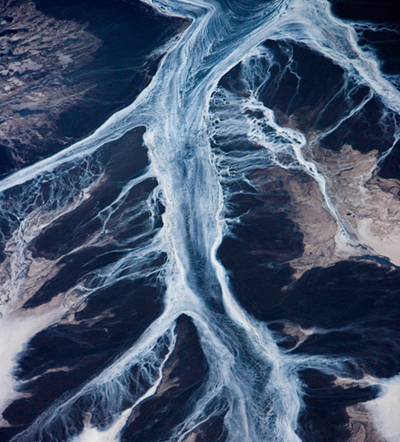
The Day After Tomorrow by J Henry Fair, published by powerHouse Books (Click image to enlarge)

He’s been to many of the locales across the continent probably found toward the very end of most travelers’ sight-seeing lists: the deforested lands of Kenogami in Ontario, Canada; the mountaintops laid bare by coal miners in Appalachia; and the beds of petroleum coke in Texas City, Texas. J Henry Fair has journeyed to each of them so that those less inclined to follow this itinerary can simply view the pages of his book,
The Day After Tomorrow: Images of Our Earth in Crisis. To be published by powerHouse Books in January 2011, it assembles 80 vivid color photographs from Fair’s 10-year-long and still ongoing project, “Industrial Scars,” which examines the repercussions of modern lifestyles on the natural landscape. Essays are interspersed throughout by prominent writers and environmentalists, including NASA’s James Hansen and Tensie Whelan of the Rainforest Alliance. For Fair, artwork is a call to action. Planet spoke to him about the power, the ugliness, and, yes, the beauty of his images.
Artists often resist giving the impression that there is any political motivation behind their work, but you are completely forthright. How did you decide to do away with any pretense about what you were hoping to communicate?
Well, why be pretentious? The first thing that I am asked when I show someone these pictures is ‘Oh my god, what is it?’ And actually the pictures came before the knowledge of what is it. I went looking for it, but I didn’t know what I’d found.
(more…)
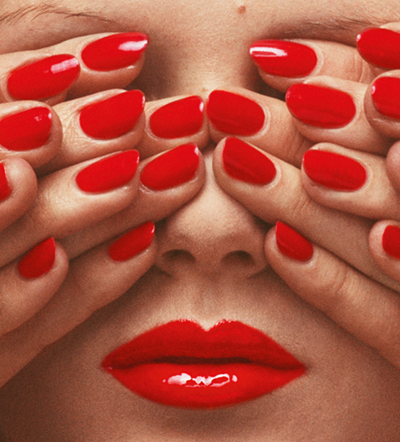
In Between by Guy Bourdin Published by Steidl Dangin (Click to enlarge)

Guy Bourdin, the original bad boy of fashion photography, came to fame in 1955 when on the pages of the French Vogue he juxtaposed the prim
haute couture dresses against butchered cow heads. At the time this was far more audacious than the current vapid soft porn of Terry Richardson and Olivier Zahm. Bourdin went on to become one of the most celebrated fashion photographers in the world. The new book, In Between (
Steidl, $58), offers an engaging retrospective of his work.
The 272 page tome offers 400 carefully selected photographs that span Bourdin’s
oeuvre from 1955 to 1989. The theme of the book is centered on the photographer’s signature achievement – the use of the magazine spread that allowed him to create large, striking images. There are quite a few impressive photos in the book, mostly those of his late work. Curiously enough, the book is not organized in chronological order, which would allow the viewer to see how Bourdin’s work became more daring with time. The most remarkable images are those that bear the photographer’s trademark fascination with red color used in makeup. The red of the lipstick and the nail polish is wooingly deep and the starkness of the photographs is arresting.
Bourdin was most successful where his images were utterly artificial and staged. The more idyllic photos that use nature or children fade in comparison with the gloss and pomp of his obviously theatrical work. Fashion, after all, is theater and Bourdin had a talent for providing the stage.
(more…)
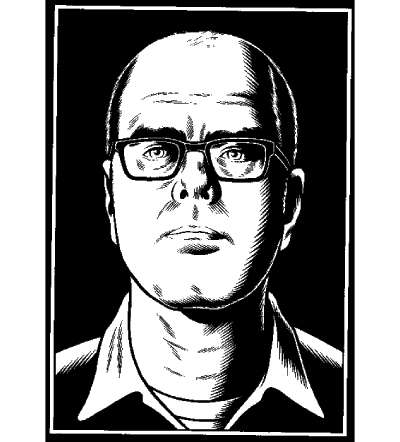
Illustration and Images courtesy of Charles Burns

Charles Burns has been a luminary of the alternative comics world since the early ’80s, when his work was published in the underground comics anthology
RAW, edited by Art Spiegelman and Françoise Mouly. Most famous for
Black Hole — published between 1995 and 2005, the series chronicles the misfortunes of a group of Seattle teenagers who contract a horrifying sexually transmitted disease which leads to gruesome disfigurations — Burns is also the in-house illustrator for
The Believer and has done advertising work for commercial products such as Altoids and Coca-Cola.
His latest work,
X’ed Out (Pantheon Books, $19.95), will be released on October 19th as the first installment in a new trilogy. Printed in brilliant full color, the book follows a young man named Doug as he drifts in and out of sleep-like states, flashbacks and what seem to be full on, drug-induced hallucinations.
PLANET sat down with Charles Burns in his Philadelphia home to talk about
X’ed Out, his so-deemed “genius for the grotesque” and why he doesn’t write teenage vampire romances.
(more…)
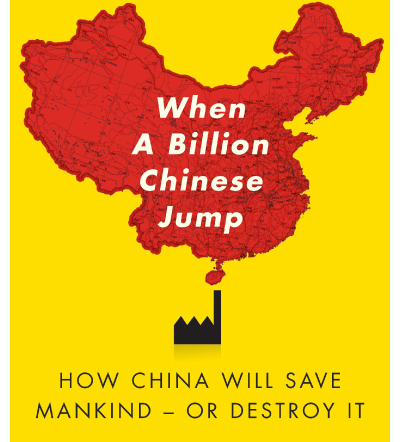
By Jonathan Watts. Image courtesy of Scribner

As China goes, so goes the rest of the world. That’s how British journalist Jonathan Watts frames the future. In
When a Billion Chinese Jump, (due out this month from Scribner), Watts outlines two possible trajectories for the world’s biggest carbon emitter: it can reset its current fossil fuel-powered industrial development by becoming the first green superpower, or it can continue on its current course of staggering expansion against a backdrop of diminishing natural resources. On a six-month journey from the foot of the Himalayas to the country’s flat northern grasslands, Watts provides an account of China’s race into the 21st Century and explains the severity of the consequences of its decisions.
The extent of the industrialization currently taking place becomes shockingly apparent in chapters detailing the construction of the world’s largest dams, emerging mega-municipalities like Chongqing, with its thirty-one million citizens, and the pulsating Chinese manufacturing lifeblood.
(more…)

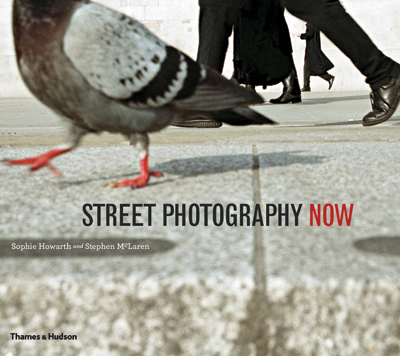
Trafalgar Square, London, 2007. © Matt Stuart. Images courtesy of Thames & Hudson

Street photography goes back at least to the 1930s, when Henri Cartier-Bresson roamed the streets of Paris with his lightweight Leica in hand. But it really came of age in the 1950s, when photographers like Garry Winogrand, Lee Friedlander, and Joel Meyerowitz made a point of spending all day on the streets, catching quirky, serendipitous moments of everyday life. The challenge, always, was to be in the right place at the right time, alert and perfectly positioned to capture what Cartier-Bresson called “the decisive moment” — when background, subject, and mood came together in surprising and revealing ways
In Street Photography Now (Thames & Hudson), authors Sophie Haworth and Stephen McLaren have put together a survey of some of the world’s best street photography at this particular moment. That’s no easy task, of course. The advent of sites like Facebook, Flickr, and Twitpic has made almost all of us into street photographers of one sort or another. To narrow down the task, Haworth and McLaren sought out “the strongest work by the most committed practitioners”, choosing forty-six photographers to represent the genre. Included are are some long-established names — such as Meyerowitz, who’s still going strong fifty years after his debut — but most of the photographers are up-and-coming, in their late thirties and early forties. In other words, they’re old enough to have developed a signature style, but young and energetic enough to pound the pavement every day.
(more…)
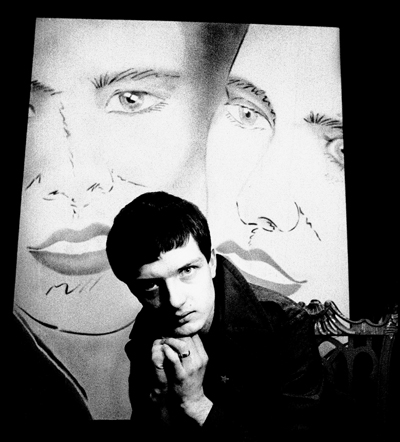
photography by Kevin Cummins, courtesy of Kevin Cummings, Joy Division, Rizzoli, 2010. (Click images to enlarge)

I came to Joy Division through Nine Inch Nails, after hearing their brilliant cover of “Dead Souls” on
The Crow soundtrack. I was immediately attracted by the emotional energy that bubbled up under Curtis’s somber, meditative voice. His introspection was way more attractive than the screams of the Sex Pistols. This lack of ostentation was what put the “post“ in “post-punk” for me.
Much has been said about Curtis’s suicide thirty years ago. Sometimes it seemed inevitable — his lyrics were permeated with existential crisis. I am writing this as drums cascade on “Heart and Soul”, and Curtis sings, “Existence, well, what does it matter? I exist on the best terms I can”. But to write another eulogy seems pointless. Sometimes images do more by allowing us to simply absorb, without interpreting and analyzing.
Joy Division never made it big during its short life, and so the band was rarely photographed. A new book,
Joy Division (
Rizzoli, $45), by the band’s photographer, Kevin Cummins, aims to fill this void. For the truly obsessive, the book begins with shots of various Joy Division paraphernalia, including the original instruments and Curtis’s notebooks. But the book really unravels in the following photo session that depicts the band walking through dreary Manchester, including the famous shot of the band standing on a snowy overpass. Other photo sessions (they function like small stories) depict the band rehearsing and performing. The black and white images look raw and vivid, harking back to the pre-digital photography world, and they make the band come alive again.
(more…)
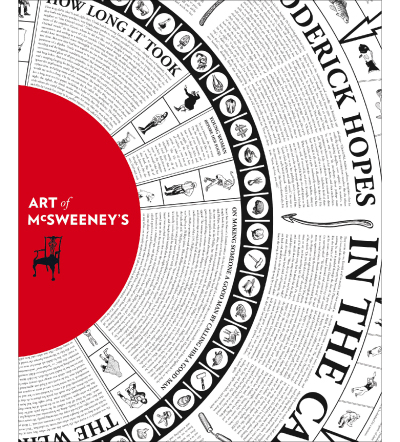
Photography courtesy of Chronicle Books

With this summer’s release of
Art of McSweeney’s, Dave Eggers and co. may have provided the most compelling reason yet to hold off on buying a Kindle. Though
Art of McSweeney’s is technically an anniversary tribute to the unfailingly original visuals in the pages and on the covers of all publications under the McSweeney’s umbrella —
The Believer magazine,
McSweeney’s Quarterly Concern, all four imprints of McSweeney’s Books — the über-illustrated tome is a typically large McSweeney’s undertaking, a tribute to the very existence and possibilities of print media.
“We spend a good deal of time editing books, and producing books of the highest quality we’re capable of, in the hopes that in doing so, we’ll keep people mindful of the pleasures of the book-as-object,” explains Eggers in the book’s early pages, alongside his dedication to “these physical books that purportedly have no future”.
True to their mission, the McSweeney’s team has created an object that can only be properly experienced in hard copy. From diagrams to illustrations to behind-the-scenes photos (Joyce Carroll Oates playing Sega stands out as a highlight)
Art of McSweeney’s reads like a 264-page love letter to all things printed and bound, complete with a muse board of old school book covers that would make Kanye West proud.
(more…)
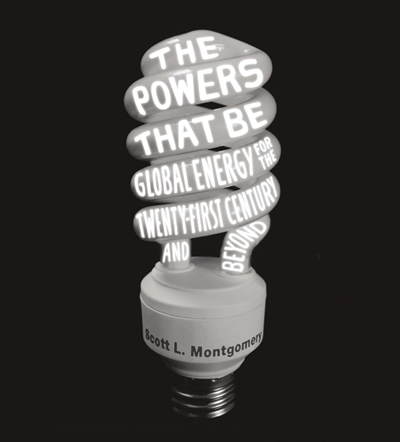
Cover courtesy of The University of Chicago Press

This was supposed to be the year when the powers in Washington came together to pass new legislation on energy. Instead, it is a year that may best be remembered for an unprecedented oil spill and a missed opportunity at seriously addressing climate and energy security concerns. The announcement that the White House is being fitted for new solar panels comes as a potential sign of newly recharged aspirations, but for now the lack of a clear forward strategy simply means that these issues will only gain greater urgency. This places even greater relevance on the recently published tour de force of an energy guidebook,
The Powers That Be (The University of Chicago Press, $35) by geologist and science writer Scott L. Montgomery. While conceding that a precise picture of the future is still impossible to draw, the book presents an encyclopedic account of the current landscape and a preview of the transformations and challenges awaiting us.
The decades ahead will be ruled above all else by energy pluralism, according to Montgomery, given the fact that a greater set of options now exists than ever before and with advancements continuing to take place in each case. Yet in our energy present, 80 percent of the globe is still powered by fossil fuels. There is a tremendous upward trend in demand, mollified only temporarily by the recession and led primarily by developing nations, such as China and India, which are relying to an alarming degree on their domestic coal reserves. The issue is not one of resource depletion.
(more…)





 Facebook
Facebook Permalink
Permalink Digg
Digg Reddit
Reddit LinkedIn
LinkedIn StumbleUpon
StumbleUpon Tumblr
Tumblr












